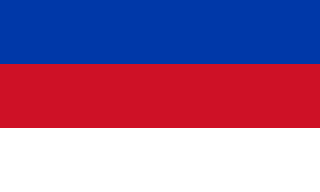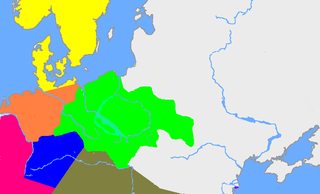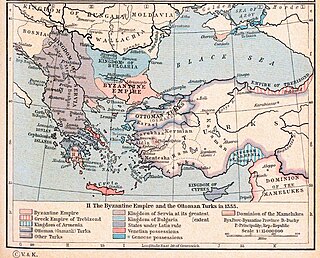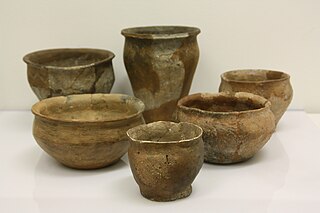Related Research Articles

The Sorbian languages are the Upper Sorbian language and Lower Sorbian language, two closely related and partially mutually intelligible languages spoken by the Sorbs, a West Slavic ethno-cultural minority in the Lusatia region of Eastern Germany. They are classified under the West Slavic branch of the Indo-European languages and are therefore closely related to the other two West Slavic subgroups: Lechitic and Czech–Slovak. Historically, the languages have also been known as Wendish or Lusatian. Their collective ISO 639-2 code is wen.

Sorbs are an indigenous West Slavic ethnic group predominantly inhabiting the parts of Lusatia located in the German states of Saxony and Brandenburg. Sorbs traditionally speak the Sorbian languages, which are closely related to Czech, Polish, Kashubian, Silesian, and Slovak. Upper Sorbian and Lower Sorbian are officially recognized minority languages in Germany.

The Lusatian culture existed in the later Bronze Age and early Iron Age in most of what is now Poland and parts of the Czech Republic, Slovakia, eastern Germany and western Ukraine. It covers the Periods Montelius III to V of the Northern European chronological scheme. It has been associated or closely linked with the Nordic Bronze Age. Hallstatt influences can also be seen particularly in ornaments and weapons.

Polabian Slavs, also known as Elbe Slavs and more broadly as Wends, is a collective term applied to a number of Lechitic tribes who lived scattered along the Elbe river in what is today eastern Germany. The approximate territory stretched from the Baltic Sea in the north, the Saale and the Limes Saxoniae in the west, the Ore Mountains and the Western Sudetes in the south, and Poland in the east.

The Serbs trace their history to the 6th and 7th-century Slavic migrations to Southeastern Europe of the Early Slavs. These migrants absorbed the local Byzantines, who were primarily descendants of different paleo-Balkan peoples, and other former Roman citizens, and later established various states throughout the Middle Ages.

The prehistory and protohistory of Poland can be traced from the first appearance of Homo species on the territory of modern-day Poland, to the establishment of the Polish state in the 10th century AD, a span of roughly 500,000 years.

Reric or Rerik was one of the Viking Age multi-ethnic Slavic-Scandinavian emporia on the southern coast of the Baltic Sea, located near Wismar in the present-day German state of Mecklenburg-Vorpommern Reric was established probably in 735 shortly after Slavs of the Obodrite tribe had started to settle the region. At the turn of the 9th century, the citizens of Reric allied with Charlemagne, who used the port as part of a strategic trade route that would avoid areas of Saxon and Danish control. It was destroyed in 808 AD by the Viking (danish) king Gudfred. The destroyed place was rebuilt by the Obodrites and continued to operate for a short until Drasco was murdered in Reric in 810 at the instigation of Gudfred. After that, the tradespeople were reportedly moved by the king to the Viking emporium of Hedeby near modern Schleswig.

The most important phenomenon that took place within the lands of Poland in the Early Middle Ages, as well as other parts of Central Europe was the arrival and permanent settlement of the West Slavic or Lechitic peoples. The Slavic migrations to the area of contemporary Poland started in the second half of the 5th century AD, about a half century after these territories were vacated by Germanic tribes fleeing from the Huns. The first waves of the incoming Slavs settled the vicinity of the upper Vistula River and elsewhere in the lands of present southeastern Poland and southern Masovia. Coming from the east, from the upper and middle regions of the Dnieper River, the immigrants would have had come primarily from the western branch of the early Slavs known as Sclaveni, and since their arrival are classified as West Slavs and Lechites, who are the closest ancestors of Poles.

After the glaciers of the Ice Age in the Early Stone Age withdrew from the area, which since about 1000 AD is called Pomerania, in what are now northern Germany and Poland, they left a tundra. First humans appeared, hunting reindeer in the summer. A climate change in 8000 BC allowed hunters and foragers of the Ertebølle-Ellerbek culture to continuously inhabit the area. These people became influenced by farmers of the Linear Pottery culture who settled in southern Pomerania. The hunters of the Ertebølle-Ellerbek culture became farmers of the Funnelbeaker culture in 3000 BC. The Havelland culture dominated in the Uckermark from 2500 to 2000 BC. In 2400 BC, the Corded Ware culture reached Pomerania and introduced the domestic horse. Both Linear Pottery and Corded Ware culture have been associated with Indo-Europeans. Except for Western Pomerania, the Funnelbeaker culture was replaced by the Globular Amphora culture a thousand years later.

The early Slavs were an Indo-European peoples who lived during the Migration Period and the Early Middle Ages in Central, Eastern and Southeast Europe and established the foundations for the Slavic nations through the Slavic states of the Early and High Middle Ages. The Slavs' original homeland is still a matter of debate due to a lack of historical records; however, scholars believe that it was in Eastern Europe, with Polesia being the most commonly accepted location.

Germania Slavica is a historiographic term used since the 1950s to denote the landscape of the medieval language border zone between Germanic people and Slavs in Central Europe on the one hand and a 20th-century scientific working group to research the conditions in that area during the Early Middle Ages and High Middle Ages on the other.
The Korchak culture is an archaeological culture of the sixth and seventh century East Slavs who settled along the southern tributaries of the Pripyat River and from the Dnieper River to the Southern Bug and Dniester rivers, throughout modern-day northwestern Ukraine and southern Belarus.

Ostsiedlung is the term for the Early Medieval and High Medieval migration of ethnic Germans into the territories in the eastern part of Francia, East Francia, and the Holy Roman Empire and beyond; and the consequences for settlement development and social structures in the areas of settlement. Generally sparsely and in some inland areas only relatively recently populated by Slavic, Baltic and Finnic peoples, the most settled area was known as Germania Slavica. Other regions were also settled, though not as heavily. The Ostsiedlung encompassed multiple modern and historical regions such as Germany east of the Saale and Elbe rivers, the states of Lower Austria and Styria in Austria, Livonia, Poland, the Czech Republic, Slovakia, Slovenia, Hungary, and Transylvania in Romania.

The Sorbs, also known as Serbs or White Serbs in Serbian historiography, were an Early Slavic tribe settled between Saale-Elbe valley up to Lusatian Neisse. They were part of the Polabian Slavs and Wends group of Early Slavs. In the 7th century, the tribe joined Samo's Empire and part of them emigrated from their homeland White Serbia to the Southeast Europe. The tribe is last mentioned in the late 10th century, but its descendants can be found among Germanized people of Saxony and Slavic ethnic group of Sorbs in Lusatia, and Serbs in Southeastern Europe.

The Sukow or Sukow-Dziedzice group or Sukow-Dziedzice culture, also known as Szeligi culture, was an archaeological culture attributed to the Early Slavs. Areal of sites lays between Elbe and Vistula rivers in Northeast Germany and North West Poland. The earliest sites usually date to the second half of 7th and mid-8th centuries.

Sebastian Brather is a German medieval archaeologist and co-editor of Germanische Altertumskunde Online.
Joachim Herrmann was a German historian, archaeologist, scientist, and institutional director. He was a noted scholar in East Germany (GDR) who specialized in Slavic archaeology, but with ambivalent legacy, as his career and research was politically motivated because of which "deliberately distorted the view of history".

The Leipzig group in archaeology refers to the Slavic pottery from the Early to High Middle Ages in the Elbe-Saale area in today's state of Saxony, Saxony-Anhalt and Thuringia. It has four ceramic sub-groups or phases named after the eponymous sites of Rüssen, Rötha, Groitzsch and Kohren. It derives from Prague-Korchak culture. The group's area is considered to roughly correlate to the area of the Early Slavic tribe of Sorbs situated in Elbe-Mulde-Saale rivers valley.

Johannisberg is a prominent ridge of the Wöllmisse, a Muschelkalk plateau east of Jena. The steeply sloping spur of land to the Saale Valley north of the district of Alt-Lobeda bears the remains of two important fortifications from the late Bronze Age and the early Middle Ages. Due to several archaeological excavations and finds recovered since the 1870s, they are among the few investigated fortifications from these periods in Thuringia. Of particular interest in archaeological and historical research is the early medieval castle. Due to its location directly on the eastern bank of the Saale, its dating and interpretation were and are strongly linked to considerations of the political-military eastern border of the Frankish empire. It is disputed whether it was a fortification of independent Slavic rulers or whether it was built under Frankish rule. According to a recent study, it may have been built in the second half of the 9th century in connection with the establishment of the limes sorabicus under Frankish influence.
References
- Fernando Agua, María-Ángeles Villegas, Urszula Kobylińska, Zbigniew Kobyliński and Manuel García-Heras (2020). "Archaeometric study of Medieval Tornow-type pottery from archaeological sites in Western Poland and EasternGermany". Archaeologica Hereditas. Vol 17, pp. 71–84
- Paul M. Barford (2001). The Early Slavs: Culture and Society in Early Medieval Eastern Europe. Cornell University Press. ISBN 9780801439773
- Sebastian Brather (2004). "The beginnings of Slavic settlement east of the river Elbe". Antiquity, Volume 78, Issue 300. pp. 314–329
- Sebastian Brather (2001; 2nd ed. 2008). Archäologie der westlichen Slawen: Siedlung, Wirtschaft und Gesellschaft im früh- und hochmittelalterlichen Ostmitteleuropa . Walter de Gruyter. ISBN 9783110206098
- Felix Biermann (2009). "M. Dulinicz, Frühe Slawen im Gebiet zwischen unterer Weichsel und Elbe. Studien zur Siedlungsgeschichte und Archäologie der Ostseegebiete (Neumünster 2006)". Germania (87). pp. 331-334.
- Felix Biermann (2011). "Functions of the Large Feldberg Type Strongholds from the 8th/9th Century in Mecklenburg and Pomerania". Sprawozdania Archeologiczne (63), pp. 149–173
- Eike Gringmuth-Dallmer (2017). "Between Science and Ideology: Aspects of Archaeological Research in the Former GDR Between the End of World War II and the Reunification", pp. 235–273. In Archaeology of the Communist Era: A Political History of Archaeology of the 20th Century, ed. Ludomir R. Lozny. Springer. ISBN 978-3-319-45106-0
- Marek Dulinicz (1994). "Problem datowania grodzisk typu Tornow i grupy Tornow-Klenica". Archeologia Polski. Vol 39 (1-2), pp. 31–49
- Heather, Peter (2009). "The Creation of Slavic Europe". Empires and Barbarians: The Fall of Rome and the Birth of Europe. Oxford University Press. ISBN 978-0-19-975272-0.
- Bartłomiej Gruszka, Piotr Gunia, Michał Kara (2017). "Workshop pottery from the early phases of the early Middle Ages in the Middle Odra basin in the light of specialist analyses". Archaeologia Polona. Vol 55, pp. 39–76
- Joachim Henning (1998). "Neues zum Tornower Typ: Keramische Formen und Formenspektren des Frühmittelalters im Licht dendrochronologischer Daten zum westslawischen Siedlungsraum". Slavonic countries in the Middle Ages. Profanum and sacrum. Poznań, pp. 392–408, ISBN 9788370632038
- Zofia Kurnatowska (2008). "Nowe spojrzenie na geneze ceramiki wczesnosredniowiecznej". Archeologia Polski. Vol 53 (1), pp. 73–80
- Ludomir R. Lozny (2013). Prestate Societies of the North Central European Plains: 600-900 CE. Springer. ISBN 9781461468158
- Sławomir Moździoch (2016). "From a Tribe to a State: The Archaeology of the Early Middle Ages in the Interior Area Between the Odra and Bug Rivers—the So-Called ‘Tribal Period’". In: Trzeciecki, M., ed. The Past Societies. Polish Lands from the First Evidence of Human Presence to the Early Middle Ages: 500 ad–1000 AD, Vol 5. Warsaw: Institute of Archaeology and Ethnology, Polish Academy of Sciences, pp. 123–167, ISBN 9788363760779
- Mats Roslund (2007). Guests in the House: Cultural Transmission between Slavs and Scandinavians 900 to 1300 AD . BRILL. ISBN 9789047421856